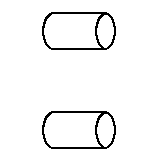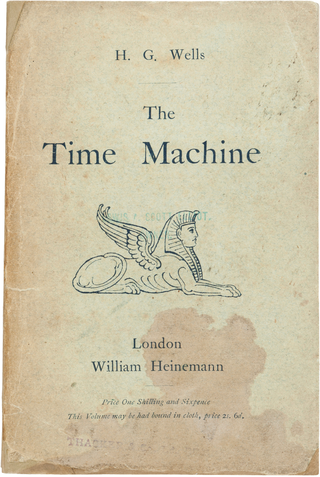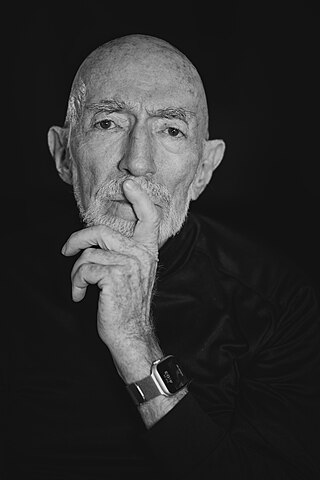Gallery



In general relativity, a Roman ring (proposed by Matt Visser in 1997 [1] and named after the Roman arch, a concept proposed by Mike Morris and Kip Thorne in 1988 and named after physicist Tom Roman) [2] is a configuration of wormholes where no subset of wormholes is near to chronology violation, though the combined system can be arbitrarily close to chronology violation.
For example, an Earth–Moon wormhole whose far end is 0.5 seconds in the "past" will not violate causality, since information sent to the far end via the wormhole and back through normal space will still arrive back on Earth (-0.5 + 1) = 0.5 seconds after it was transmitted; but an additional wormhole in the other direction will allow information to arrive back on Earth 1 second before it was transmitted (time travel). However, it is believed that relative time between the transmission of the information in one wormhole throat and out the other end in a ring structure will remain the same, because light wouldn't have violated local proper time, because the distance traveled by the information would take time, either by going the long way or through the wormhole.
Semiclassical approaches to incorporating quantum effects into general relativity seem to show that the chronology protection conjecture postulated by physicist Stephen Hawking fails to prevent the formation of such rings, although Matt Visser feels that there are reasons to think the semiclassical approach is unreliable here, and that a full theory of quantum gravity will likely uphold chronology protection.



Faster-than-light travel and communication are the conjectural propagation of matter or information faster than the speed of light. The special theory of relativity implies that only particles with zero rest mass may travel at the speed of light, and that nothing may travel faster.

General relativity, also known as the general theory of relativity and Einstein's theory of gravity, is the geometric theory of gravitation published by Albert Einstein in 1915 and is the current description of gravitation in modern physics. General relativity generalises special relativity and refines Newton's law of universal gravitation, providing a unified description of gravity as a geometric property of space and time or four-dimensional spacetime. In particular, the curvature of spacetime is directly related to the energy and momentum of whatever matter and radiation are present. The relation is specified by the Einstein field equations, a system of second order partial differential equations.

Quantum gravity (QG) is a field of theoretical physics that seeks to describe gravity according to the principles of quantum mechanics. It deals with environments in which neither gravitational nor quantum effects can be ignored, such as in the vicinity of black holes or similar compact astrophysical objects, such as neutron stars as well as in the early stages of the universe moments after the Big Bang.

Time travel is the hypothetical activity of traveling into the past or future. Time travel is a widely recognized concept in philosophy and fiction, particularly science fiction. In fiction, time travel is typically achieved through the use of a hypothetical device known as a time machine. The idea of a time machine was popularized by H. G. Wells' 1895 novel The Time Machine.
A wormhole is a hypothetical structure connecting disparate points in spacetime, and is based on a special solution of the Einstein field equations.
The Novikov self-consistency principle, also known as the Novikov self-consistency conjecture and Larry Niven's law of conservation of history, is a principle developed by Russian physicist Igor Dmitriyevich Novikov in the mid-1980s. Novikov intended it to solve the problem of paradoxes in time travel, which is theoretically permitted in certain solutions of general relativity that contain what are known as closed timelike curves. The principle asserts that if an event exists that would cause a paradox or any "change" to the past whatsoever, then the probability of that event is zero. It would thus be impossible to create time paradoxes.

The Alcubierre drive is a speculative warp drive idea according to which a spacecraft could achieve apparent faster-than-light travel by contracting space in front of it and expanding space behind it, under the assumption that a configurable energy-density field lower than that of vacuum could be created. Proposed by theoretical physicist Miguel Alcubierre in 1994, the Alcubierre drive is based on a solution of Einstein's field equations. Since those solutions are metric tensors, the Alcubierre drive is also referred to as Alcubierre metric.

A gravitational singularity, spacetime singularity or simply singularity is a condition in which gravity is predicted to be so intense that spacetime itself would break down catastrophically. As such, a singularity is by definition no longer part of the regular spacetime and cannot be determined by "where" or "when". Gravitational singularities exist at a junction between general relativity and quantum mechanics; therefore, the properties of the singularity cannot be described without an established theory of quantum gravity. Trying to find a complete and precise definition of singularities in the theory of general relativity, the current best theory of gravity, remains a difficult problem. A singularity in general relativity can be defined by the scalar invariant curvature becoming infinite or, better, by a geodesic being incomplete.
Doubly special relativity (DSR) – also called deformed special relativity or, by some, extra-special relativity – is a modified theory of special relativity in which there is not only an observer-independent maximum velocity, but also, an observer-independent maximum energy scale and/or a minimum length scale. This contrasts with other Lorentz-violating theories, such as the Standard-Model Extension, where Lorentz invariance is instead broken by the presence of a preferred frame. The main motivation for this theory is that the Planck energy should be the scale where as yet unknown quantum gravity effects become important and, due to invariance of physical laws, this scale should remain fixed in all inertial frames.

Kip Stephen Thorne is an American theoretical physicist known for his contributions in gravitational physics and astrophysics.
In mathematical physics, a closed timelike curve (CTC) is a world line in a Lorentzian manifold, of a material particle in spacetime, that is "closed", returning to its starting point. This possibility was first discovered by Willem Jacob van Stockum in 1937 and later confirmed by Kurt Gödel in 1949, who discovered a solution to the equations of general relativity (GR) allowing CTCs known as the Gödel metric; and since then other GR solutions containing CTCs have been found, such as the Tipler cylinder and traversable wormholes. If CTCs exist, their existence would seem to imply at least the theoretical possibility of time travel backwards in time, raising the spectre of the grandfather paradox, although the Novikov self-consistency principle seems to show that such paradoxes could be avoided. Some physicists speculate that the CTCs which appear in certain GR solutions might be ruled out by a future theory of quantum gravity which would replace GR, an idea which Stephen Hawking labeled the chronology protection conjecture. Others note that if every closed timelike curve in a given space-time passes through an event horizon, a property which can be called chronological censorship, then that space-time with event horizons excised would still be causally well behaved and an observer might not be able to detect the causal violation.
The chronology protection conjecture is a hypothesis first proposed by Stephen Hawking that laws of physics beyond those of standard general relativity prevent time travel on all but microscopic scales - even when the latter theory states that it should be possible. The permissibility of time travel is represented mathematically by the existence of closed timelike curves in some solutions to the field equations of general relativity. The chronology protection conjecture should be distinguished from chronological censorship under which every closed timelike curve passes through an event horizon, which might prevent an observer from detecting the causal violation.
In theoretical physics, geometrodynamics is an attempt to describe spacetime and associated phenomena completely in terms of geometry. Technically, its goal is to unify the fundamental forces and reformulate general relativity as a configuration space of three-metrics, modulo three-dimensional diffeomorphisms. The origin of this idea can be found in an English mathematician William Kingdon Clifford's works. This theory was enthusiastically promoted by John Wheeler in the 1960s, and work on it continues in the 21st century.
A temporal paradox, time paradox, or time travel paradox, is a paradox, an apparent contradiction, or logical contradiction associated with the idea of time travel or other foreknowledge of the future. While the notion of time travel to the future complies with the current understanding of physics via relativistic time dilation, temporal paradoxes arise from circumstances involving hypothetical time travel to the past – and are often used to demonstrate its impossibility.

In theoretical physics, quantum field theory in curved spacetime (QFTCS) is an extension of quantum field theory from Minkowski spacetime to a general curved spacetime. This theory uses a semi-classical approach; it treats spacetime as a fixed, classical background, while giving a quantum-mechanical description of the matter and energy propagating through that spacetime. A general prediction of this theory is that particles can be created by time-dependent gravitational fields (multigraviton pair production), or by time-independent gravitational fields that contain horizons. The most famous example of the latter is the phenomenon of Hawking radiation emitted by black holes.
A Krasnikov tube is a speculative mechanism for space travel involving the warping of spacetime into permanent superluminal tunnels. The resulting structure is analogous to a wormhole or an immobile Alcubierre drive with the endpoints displaced in time as well as space. The idea was proposed by Sergey Krasnikov in 1995.
Induced gravity is an idea in quantum gravity that spacetime curvature and its dynamics emerge as a mean field approximation of underlying microscopic degrees of freedom, similar to the fluid mechanics approximation of Bose–Einstein condensates. The concept was originally proposed by Andrei Sakharov in 1967.
A ring singularity or ringularity is the gravitational singularity of a rotating black hole, or a Kerr black hole, that is shaped like a ring.
In metric theories of gravitation, particularly general relativity, a static spherically symmetric perfect fluid solution is a spacetime equipped with suitable tensor fields which models a static round ball of a fluid with isotropic pressure.
A black star is a gravitational object composed of matter. It is a theoretical alternative to the black hole concept from general relativity. The theoretical construct was created through the use of semiclassical gravity theory. A similar structure should also exist for the Einstein–Maxwell–Dirac equations system, which is the (super) classical limit of quantum electrodynamics, and for the Einstein–Yang–Mills–Dirac system, which is the (super) classical limit of the standard model.